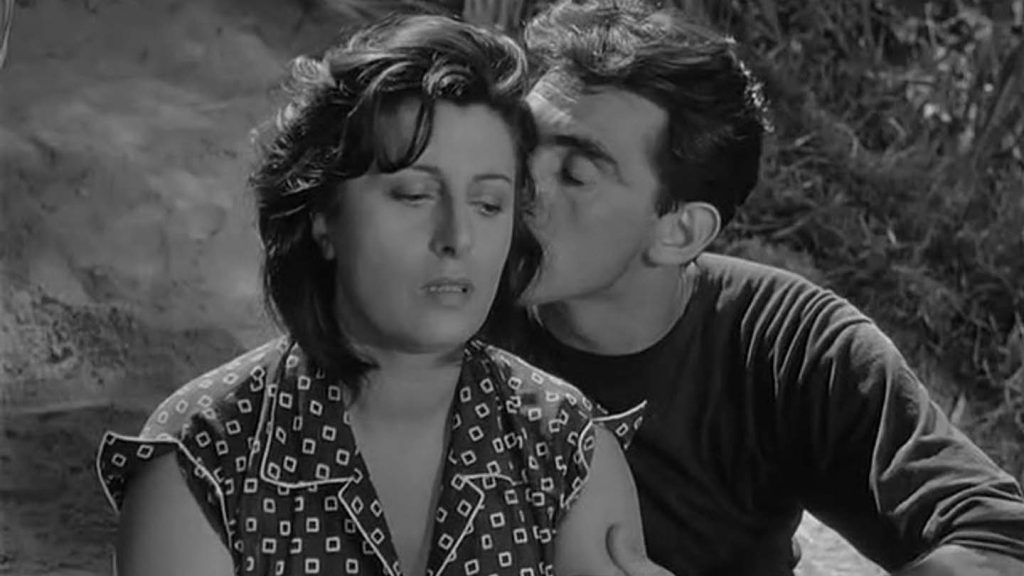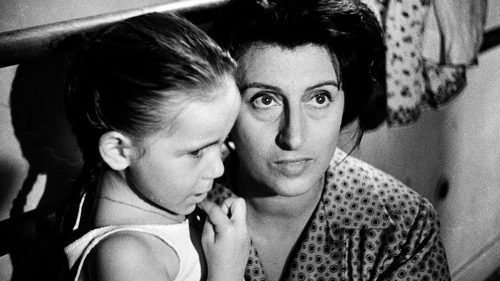
Bellissima, 1951. Usually, critics paid little attention to the role of music, which is very powerful in this movie, even in the first few scenes. Elisir d’amore (Donizetti) dominates, an allusion to Italian state broadcaster RAI’s habit of programming opera during prime time. We should also highlight a fruitful cooperation with composer and conductor Franco Mannino – Visconti worked with him in a number of opera production at the Scala Theatre in Milan. Also, the innovative directing style is often overlooked: the use of askew shots, for example, that coffee table that almost looks like it’s sliding towards the parlour door… and that night scene, running from Cinecittà. Both probably influence by Orson Welles’ Citizen Kane.
The contradictions in this movie are fairly obvious. In the first half, which Anna Magnani’s magnetic acting makes all the more powerful, we can clearly see an ante-litteram feminist figure. Maddalena Cecconi, the protagonist, has a job, a checking account that is all her own, and can afford neglecting her husband to take their daughter to dance classes.

Anna Magnani plays Maddalena Cecconi, a mother doting on her only child, Maria, 8. When a movie production in Cinecittà invites potential child actresses to audition for a part, Maddalena signs up her daughter right away. Lost in a maze-like studio city, mother and daughter w...
Maddalena sings, she is full of life, she enjoys total freedom. That’s a lot, considering Italy kept honour killings on its books until 1981. Maddalena also loves American cinema. Curiously, Burt Lancaster is mentioned. Anna Magnani (Maddalena) worked with Lancaster years later in The Rose Tattoo. The ending of the movie is where the contradiction is: it all goes back to normal, to the old regular morality. Marriage is safe, wife regrets what she did, all in all nothing serious happened… that doesn’t mean censors let it all pass, though. One of the most beautiful scenes is the one where Alberto (Walter Chiari) playfully teases the protagonist by the riverbank. There’s a little homage to foot imagery, that’s in the final shot, caressed by husband Spartaco.
It seems most critics focused on the film’s blame of Cinecittà and its evil temptations, depicted as mirages by Liliana Mancini playing herself. Also worthy of note is that the casting call for the child actor was broadcast on radio, showing a very early time in show business. In my opinion, this is marginal, really. We should probably read it as an aspiration, some hope for a better life after the horrors of war. Even the debate on whether this film was ‘actually’ neo-realism or not is moot. Visconti himself ignored the issue, and stated that his only intention was to have Anna Magnani’s character as sole subject: “A portrait of a woman, a modern mother… this is what I wanted. Show business has much less of a role.”
The wasteland Cinecittà was built on, the crowd and their hair shiny with pomade, scarf-wearing women, the Lambretta motor scooter… Garrone’s Reality is far, far down the road.